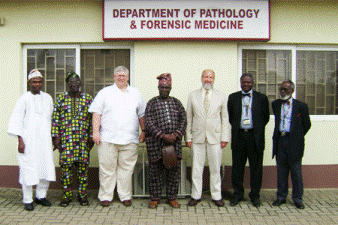Natural Resources, School of

Karl Reinhard Publications
Document Type
Article
Date of this Version
2001
Citation
Published in Medical Anthropology: Cross-Cultural Studies in Health and Illness, 20:1 (2001), pp. 96–101; doi: 10.1080/01459740.2001.9966190
Abstract
Kathleen Fuller (Medical Anthropology 17:297-308 [1997]) presents a refutation of the evidence of ancylostomids (hookworms) in the New World. She argues that the life cycle of hookworms limits them to warm, moist environments and, thus, confines their prehistoric distribution to the Old World. Smith (1990) emphasizes that very little is known about the ecological parameters of egg and larval survival and that eggs and larvae can survive in cold environments. Fuller’s hookworm life cycle is oversimplistic and does not address the diverse array of infection modes available to Ancylostoma duodenale. This species is capable of mucosal penetration and, therefore, can cause infection if its larvae are eaten. In other words, A. duodenale is a geohelminth, and the host can be an active player in the infection mode. Hypobiosis of A. duodenale diversifies infection modes (Schad 1990). The larvae have the capacity to infect through milk, and there is strong evidence that they can also migrate into the fetus. Experimental evidence indicates that the larvae can enter hypobiosis in the muscle of animals and can infect humans who eat the meat of such animals. Thus infection can occur without an extracorporeal phase. ...
Based on the analyses presented in the preceding two rebuttals of my 1997 article, it would appear that these researchers have proven that the eggs, worms, and larvae they found are, indeed, those of human hookworm. While I would like to unconditionally accept these conclusions because doing so would make the issue of hookworm in the Americas much more intriguing, I still have a number of concerns related to environment. While individual worms may be able to survive in an inhospitable environment, this does not guarantee that a population of worms could flourish in one.


Comments
Copyright © 2001 Taylor & Francis. Used by permission.